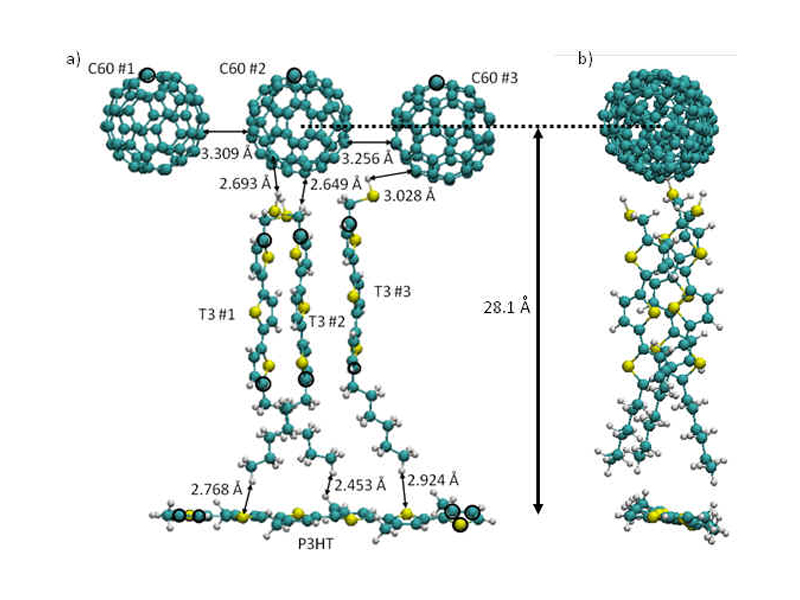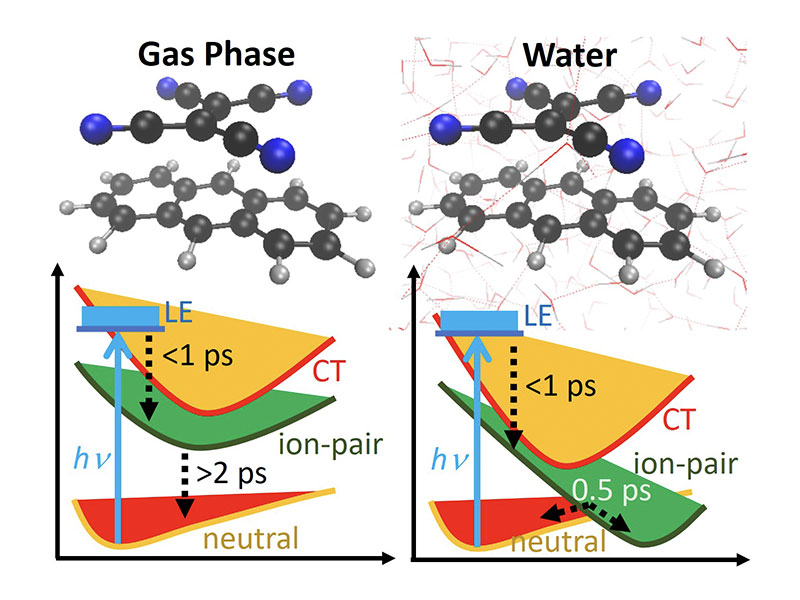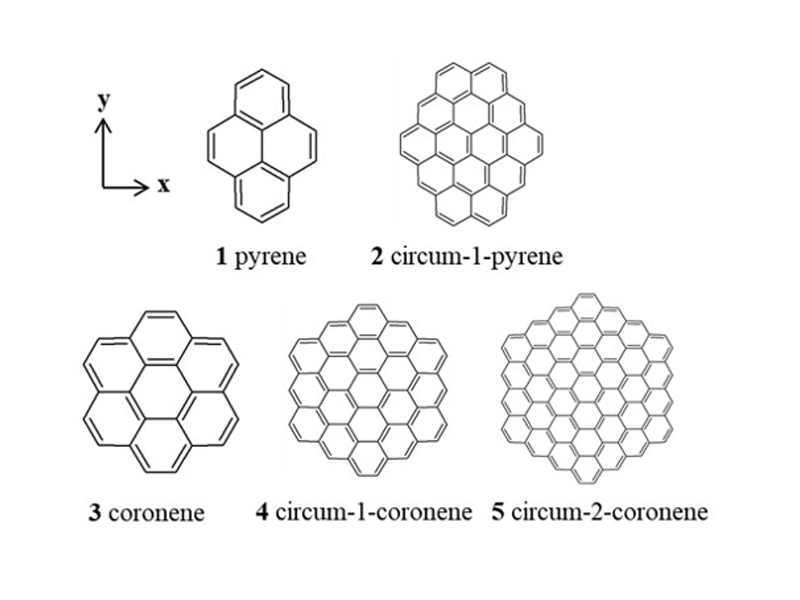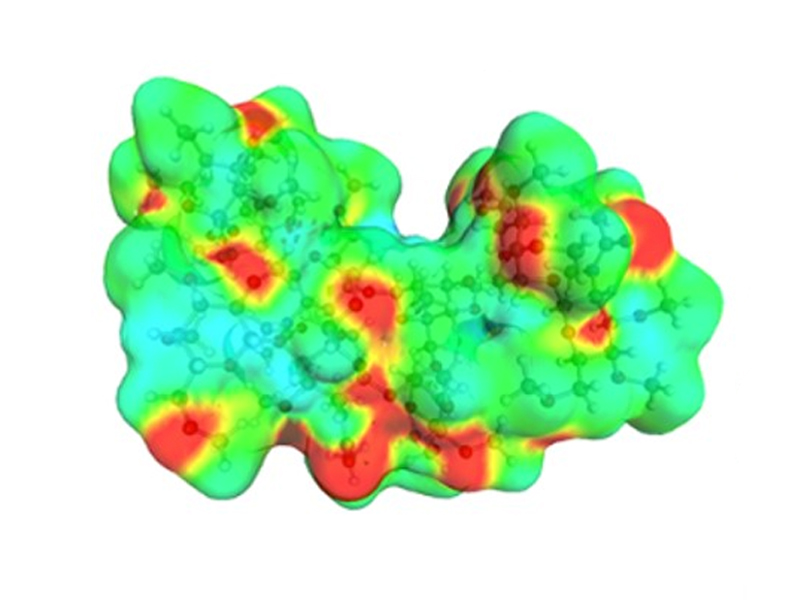EXCITED STATES OF PAHs
- Absorption and emission properties of PAHs
- Modeling the chromophores in Carbon dots
- Excitonic Interactions
B. Shi, D. Nachtigallová, A. J. A. Aquino, F. B. C. Machado, and H. Lischka
High-level theoretical benchmark investigations of the UV-vis absorption spectra of paradigmatic polycyclic aromatic hydrocarbons as models for Graphene Quantum Dots
J. Chem. Phys. 150 (2019) 124302
Model Systems

Methods
MP2, SOS-ADC(2)
TD-DFT: B3LYP, CAM-B3LYP
DFT/MRCI
SORCI
Basis sets: SV(P), SVP, TZVP, def2-TZVP

left: bright states, right all states
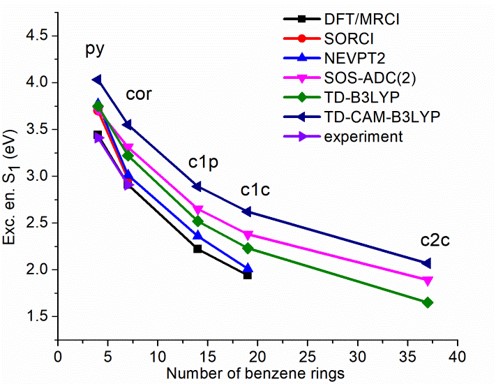
Vertical S1 excitations versus number of benzene rings
B. Shi, D. Nachtigallová, A. J. A. Aquino, F. B. C. Machado, and H. Lischka
Excited states and excitonic interactions in prototypic polycyclic aromatic hydrocarbon dimers as models for graphitic interactions in carbon dots
PhysChemChemPhys 21(2019) 9077
Different slipped parallel structures obtained for the pyrene dimer
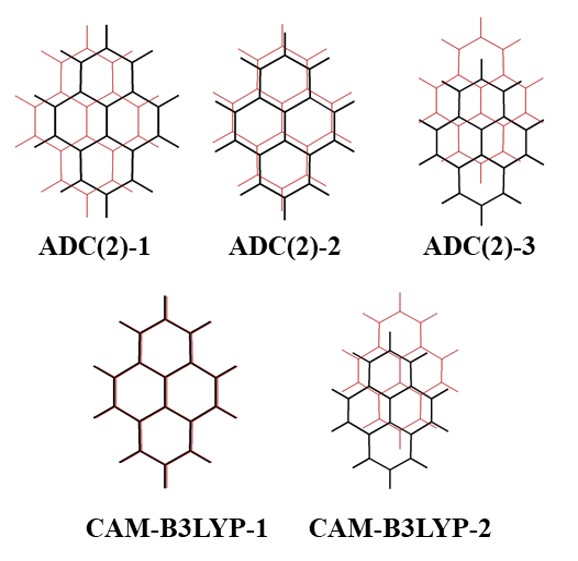
Calculations of fluorescence spectra of the dimers of pyrene, coronene, circumpyrene and circumcoronene have been performed based on optimized geometries in the S1 state using SOS-ADC(2) and TD-CAMB3LYP-D3 methods.
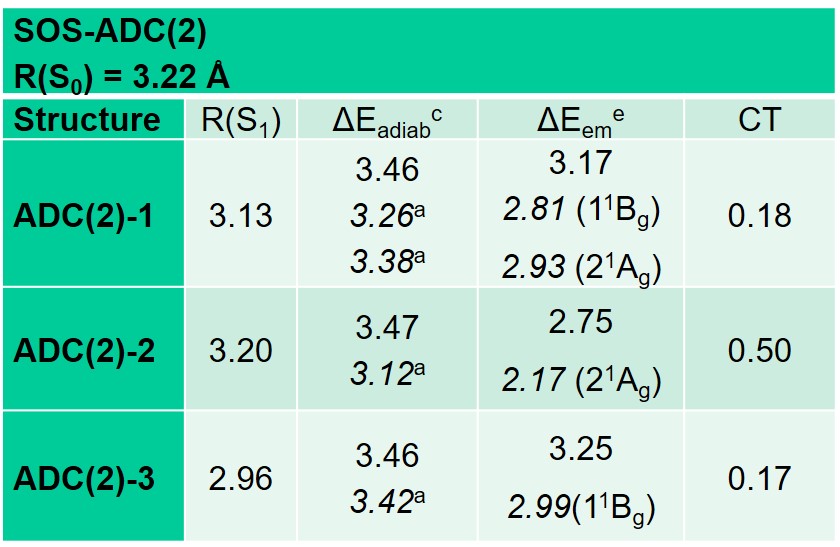
a single-point DFT/MRCI calculations; Exp. 2.59 eV
Themed collection: Photodissociation and reaction dynamics.
Th. M. Cardozo, A. P. Galliez, I. Borges Jr., F. Plasser, A. J. A. Aquino, M. Barbatti, Hans Lischka
Dynamics of Benzene Excimer Formation from the Parallel-Displaced Dimer
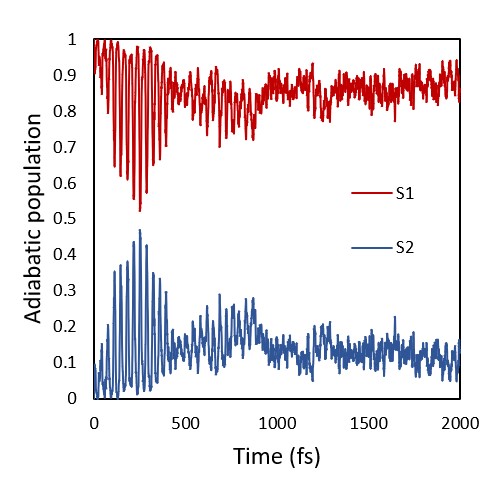
Evolution of the average adiabatic occupations of S1 and S2

R. Nieman, A. J. A. Aquino, and H. Lischka
Benchmark Ab Initio Calculations on Intermolecular Structures and the Exciton Character of Poly(p-phenylenevinylene) Dimers

Evolution of the average adiabatic occupations of S1 and S2
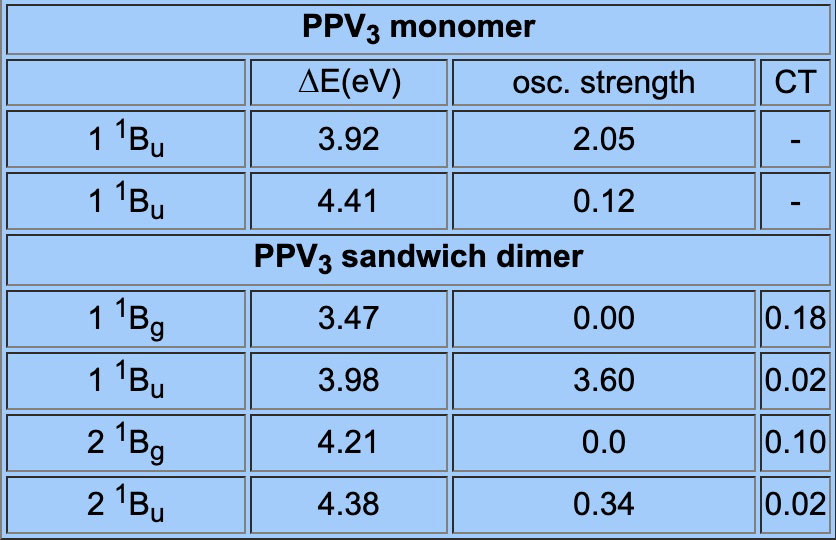
Omega matrices for PPV3 (each phenylene and vinylene unit is a segment)

The omega matrices show that the excitation occurs primarily in the interior phenyl rings. The first two states belong to one pair and the third and fourth excited states belong to another one. The CT is always larger in the dark state. The splitting of states and oscillator strengths (the first state in a pair is the dark state) show good agreemnt with the H-aggregate model.
D. Valente, M. T. do Casal, M. Barbatti, Th. A. Niehaus, A. J. A. Aquino, H. Lischka, Th. Cardozo
Excitonic and Charge Transfer Interactions in Tetracene Stacked and T-shaped Dimers
J. Chem. Phys. 154 (2021) 044306
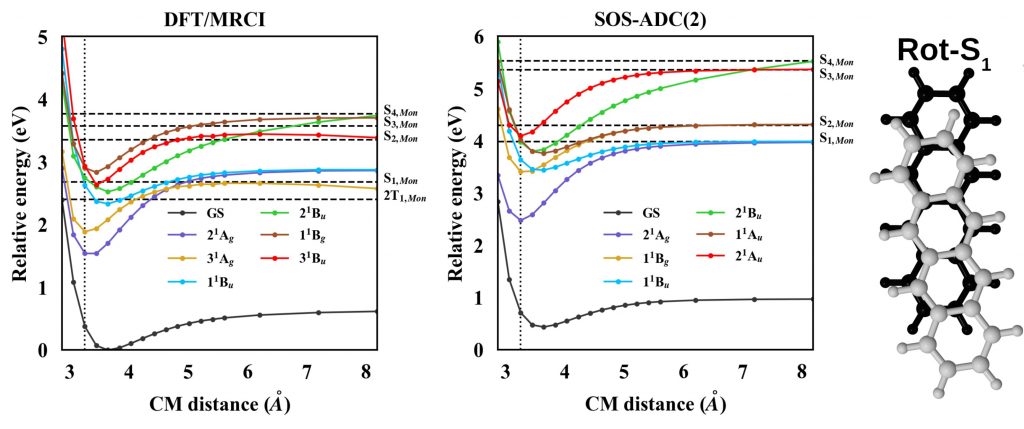
Dissociation curves for the rigid dissociation of the tetracene dimer for several excited states using the S1 minimum as starting point. The DS1-S1 optimized geometry is marked with a dotted vertical line. The excited states of the monomer (Mon) are represented as horizontal lines. The 3 1Ag state is the doubly excited 1(TT) state, the doorway state for singlet fission.


